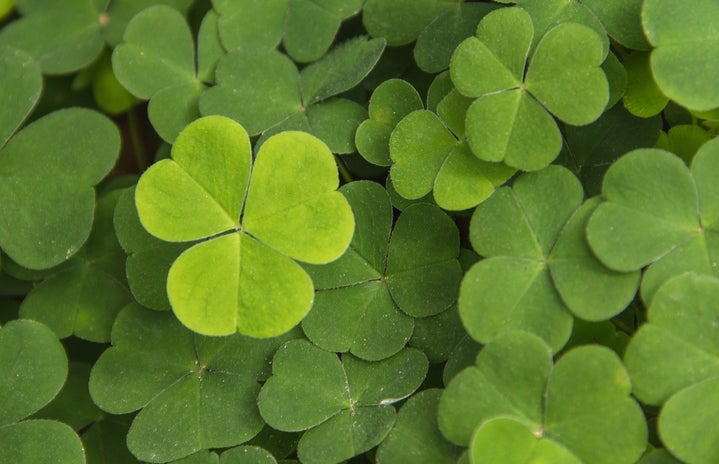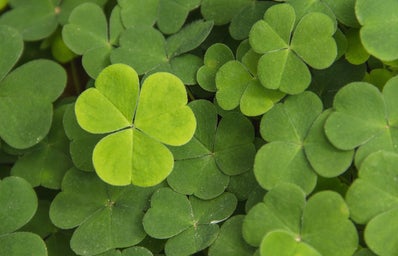Being an Irish step dancer for the past 14 years of my life has opened my eyes and heart to a whole other culture that I have grown to have a passion for. Besides the competitive dancing side that I participate in and teach regularly, the tales, music, food and celebrations that also come from Irish culture hold a special place in my heart now and forever.
Of course, the number-one celebration people typically think of when they encounter anything Irish is St. Patrick’s Day, a glorified holiday in America meant for parades, wearing green and partying. You may have heard the saying “Everyone’s Irish on St. Patrick’s Day,” but what does that mean? And what are we really celebrating, anyway?
The Man, the Myth, the Legend
Saint Patrick lived during the fifth century, and was a well known patron saint of Ireland. Born in Roman Britain, he was kidnapped and brought to Ireland as a slave at the age of 16. Later in his life he escaped, but ended up returning to Ireland and was credited with bringing Christianity to its people. Patrick’s death was believed to have been on March 17, 461. The mythology surrounding his life became ever more ingrained in Irish culture for centuries to come. The most well-known legend of Saint Patrick is that he explained the Holy Trinity (Father, Son and Holy Spirit) using the three leaves of a native Irish clover, the shamrock, which is now an important symbol for both the culture and holiday that would celebrate his life, St. Patrick’s Day.
The Irish in America
Irish immigrants in America were mostly members of the Protestant middle class up until the 19th century. During the Great Potato Famine that hit Ireland in 1845, almost one million poor and uneducated Irish Catholics began pouring into America to escape the starvation that was consuming their country. Upon arriving, they were despised for their “alien” religious beliefs and unfamiliar accents by the American Protestant majority, and they very quickly had trouble finding even unskilled jobs. When Irish Americans in the country’s cities took to the streets on St. Patrick’s Day to celebrate their beloved heritage, news reporters wrote about their normal actions yet portrayed them in cartoons as drunk and violent monkeys.
The American Irish soon began to realize that their large and continuously growing numbers allowed for them to gain political power that had yet to be exploited. They began to organize events with their voting parties, known collectively as the “green machine,” which became an important swing vote for political hopefuls. Suddenly, annual St. Patrick’s Day parades became a show of strength and pride for Irish Americans, as well as must-attend events for many political candidates.
If There’s No Parade, Then You’re Doing it Wrong!
Many might assume that the first St. Patrick’s Day parade took place in Ireland but, in fact, it happened in America. More specifically, records show that a St. Patrick’s Day parade was held on March 17, 1601 in a Spanish colony now known as St. Augustine, Florida. After more than a century had gone by, homesick Irish soldiers serving in the English military marched in New York City on March 17, 1772 to honor Saint Patrick. Over the next 35 years, Irish patriotism among American immigrants flourished, which promoted the so-called “Irish Aid” societies like the Friendly Sons of Saint Patrick and the Hibernian Society. These groups would hold annual parades featuring bagpipes and drums.
By 1848, several New York Irish Aid societies united their parades to form one official New York City St. Patrick’s Day Parade. To this day, this parade is the world’s oldest civilian parade and the largest in the United States, with over 150,000 participants. Every year almost 3 million people line the one and a half mile parade route just to watch, and the whole parade usually takes at least five hours. Boston, Chicago, Philadelphia and Savannah are some cities in the U.S. that also go big with the parades and have been known to involve between 10,000 and 20,000 participants each.
Celebrating Then Versus Now
On this side of the water, St. Patrick’s Day celebrations will be similar no matter where you go. In just about any city or town, you can find a heap of green-coated parades, concerts, festivals, marathons and bars and, of course, there will be lots of dancing.
In terms of Ireland and Northern Ireland celebrations, they have a more special way of celebrating. St. Patrick’s Day falls during the Christian season of Lent, a time when Irish families would traditionally attend church in the morning and celebrate in the afternoon in a light and wholesome manner, in respect to Saint Patrick. Today, this holiday is a much bigger deal in all of Ireland, Northern Ireland and America in similar ways. People from Belfast, Northern Ireland celebrate the big day gathered around City Hall and Custom House Square and enjoy a carnival parade, live music and Irish dancing throughout the city’s bars. Those in Ireland’s capital, Dublin, will take the celebration one step further by having a five-day mega celebration. From March 15-19th, Dublin will also go green, have a huge parade, host a 5k road race and feature plenty of live music and performances throughout. The Galway natives will be enjoying their 116th St Patrick’s Day parade this year. The tradition, stretching back over a century, features live music and plenty of local artists. Lastly, Cork, also known as the Rebel County, will host their own celebration from March 16-18th featuring a parade with the theme of “Democracy for All – 100 Years of the Vote for Women.”
Needless to say, no matter where you end up on the green holiday, you will have tons of fun.
I love the month of March. Not only am I able to travel around and show off something so unique and special to me and bring joy to those who participate, but I can celebrate the culture as a whole, and that to me is beautiful. According to Ancestry.com, I am only about 23% Irish, but hey, as I said earlier, everyone’s Irish on St. Patrick’s Day.
“Lá Fhéile Pádraig sona duit!” pronounced: “Law leh Paw-drig suna ghit.” Happy St. Patrick’s Day!
Check out an introduction to Irish dance video I made!


